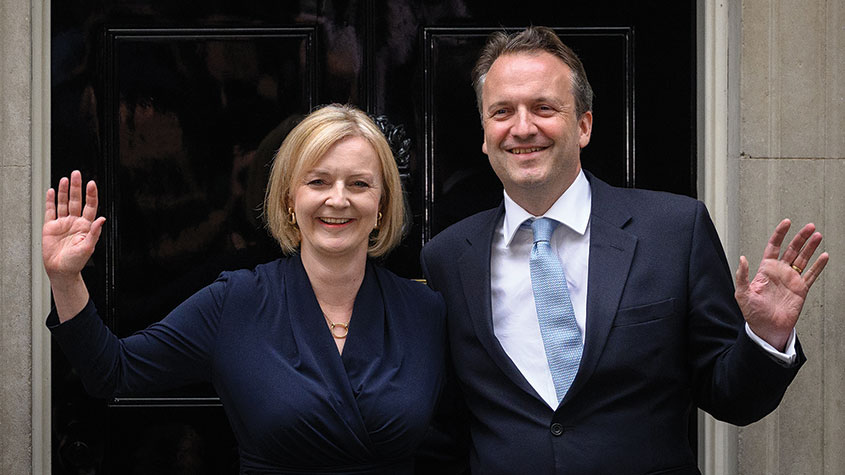MMT: a fig leaf for central-bank money printing
Like or not (and we don't much like it), modern monetary theory is on the way.

Bet you wish you held shares in Tesla. Or if you do (as most of our readers will, via their holding in the Scottish Mortgage investment trust), I bet you wish you held more shares in Tesla. They have risen fourfold this year and an extraordinary 80-fold since listing ten years ago. Believers in Tesla’s potential have made fortunes. Non-believers still think the whole thing is nuts. But nuts or not, it might go higher. Chris Andrew of Clarmond compares the firm to JDS Uniphase, a “semiconductor optical visionary” stock wildly popular in 1999. It rose five times in the year it joined the S&P 500 (as it is rumoured Tesla will this year) and 100 times in the decade leading up to its joining, as everyone jostled to get a piece of what they were convinced was “unique technology”. At its peak, JDSU’s market value soared to 20% of that of the largest listed company of the time (Microsoft).
Today Microsoft is number two. Apple is number one. Were Tesla to be worth 20% of Apple, its share price would go from around $1,500 now to $1,900 – a number pretty close to that forecast by “the most bullish Wall Street analysts”. There might be new names here, says Andrew. But this is an “old script”. One about a “once-in-a-lifetime tech company with a cult following being hysterically cheer-led by the Street and added to the key mainstream index on bizarre valuations at the same time as the central bank is flooding the markets with liquidity”.
The key here might be the last part about central banks. It is this that is driving the tech boom (bubble?) and that has helped push even UK markets (still relatively cheap!) up 20% since lockdown began. It also isn’t going to end anytime soon. In this week's magazine, we look at Modern Monetary Theory, the academic fig leaf for central bank money printing. The idea is compelling: if you control your own currency (ie, you aren’t in the eurozone); if your economy has productive capacity; and if you can convince everyone that inflation is not a problem, you can (and should) print at will and with no limit to activate that capacity. Debt doesn’t matter. Deficits don’t matter. The fact that the UK, like many other countries, has backed itself into a situation in which tax revenues no longer have a hope in hell of ever covering spending commitments doesn’t matter.
MoneyWeek
Subscribe to MoneyWeek today and get your first six magazine issues absolutely FREE

Sign up to Money Morning
Don't miss the latest investment and personal finances news, market analysis, plus money-saving tips with our free twice-daily newsletter
Don't miss the latest investment and personal finances news, market analysis, plus money-saving tips with our free twice-daily newsletter
All that matters is that you, as a government, can figure out 1) exactly what the productive capacity of the economy is; 2) how best to use it; 3) the signals it will send when it is used and more demand will create inflation; and 4) the correct way to stall the inflation. You see the problem. There is no model that can help you with 1-4 with any precision. So it is almost certainly a recipe for both capital misallocation and inflation (the deflationary impulses of demographics, technology and debt can only fight money printing for so long).
However, as John and I say on the podcast this week (listen to it here) our opposition to MMT is pointless. It is on the way – or depending on how you define it, already under way. All we can do is to figure out how we should invest as a result. Gold is part of the answer, and so are value stocks, commodities and property (although commercial property requires some caution). And what happened to JDSU? When sanity returned to the market (it always does in the end) the shares fell by 99.8%.
Get the latest financial news, insights and expert analysis from our award-winning MoneyWeek team, to help you understand what really matters when it comes to your finances.
Merryn Somerset Webb started her career in Tokyo at public broadcaster NHK before becoming a Japanese equity broker at what was then Warburgs. She went on to work at SBC and UBS without moving from her desk in Kamiyacho (it was the age of mergers).
After five years in Japan she returned to work in the UK at Paribas. This soon became BNP Paribas. Again, no desk move was required. On leaving the City, Merryn helped The Week magazine with its City pages before becoming the launch editor of MoneyWeek in 2000 and taking on columns first in the Sunday Times and then in 2009 in the Financial Times
Twenty years on, MoneyWeek is the best-selling financial magazine in the UK. Merryn was its Editor in Chief until 2022. She is now a senior columnist at Bloomberg and host of the Merryn Talks Money podcast - but still writes for Moneyweek monthly.
Merryn is also is a non executive director of two investment trusts – BlackRock Throgmorton, and the Murray Income Investment Trust.
-
 Football fans issued warning over ticket scams ahead of 2026 World Cup
Football fans issued warning over ticket scams ahead of 2026 World CupSantander customers lost more to football scams in the first six months of 2025 compared to the same period in 2024, when total losses surged due to the Euros
-
 Nationwide fined £44 million over “inadequate” anti-money laundering systems
Nationwide fined £44 million over “inadequate” anti-money laundering systemsFailings in Nationwide’s financial crime processes between October 2016 to July 2021 meant one criminal was able to deposit £26 million from fraudulent Covid furlough payments in just eight days.
-
 Inflation may be slipping but there is still plenty of misery ahead
Inflation may be slipping but there is still plenty of misery aheadEditor's letter Inflation may be a little lower than last month as the prices of petrol and diesel fall back, but it remains structural and long-term, says Merryn Somerset Webb. And there are no painless solutions.
-
 Beat the cost of living crisis – go on holiday
Beat the cost of living crisis – go on holidayEditor's letter As inflation rages, energy bills soar and the pound tanks, what’s a good way to save money this winter? Go on holiday, says Merryn Somerset Webb.
-
 How to tackle rising inflation and falling stockmarkets
How to tackle rising inflation and falling stockmarketsEditor's letter Inflation is rising around the world. Even though inflation is widely expected to return to around 3.5% next year, it is still wreaking havoc. Merryn Somerset-Webb explains what to do about it.
-
 How capitalism has been undermined by poor governance
How capitalism has been undermined by poor governanceEditor's letter Capitalism’s “ruthless efficiency” has been undermined by poor governance, a lack of competition and central banks’ over-enthusiastic money printing, says Andrew Van Sickle.
-
 Don't be scared by economic forecasting
Don't be scared by economic forecastingEditor's letter The Bank of England warned last week the UK will tip into recession this year. But predictions about stockmarkets, earnings or macroeconomic trends can be safely ignored, says Andrew Van Sickle.
-
 The biggest change in the last 17 years – the death of the “Greenspan put”
The biggest change in the last 17 years – the death of the “Greenspan put”Editor's letter Since I joined MoneyWeek 17 years ago, says John Stepek, we’ve seen a global financial crisis, a eurozone sovereign debt crisis , several Chinese growth scares, a global pandemic, and a land war in Europe. But the biggest change is the death of the “Greenspan put”.
-
 The wolf returns to the eurozone’s door
The wolf returns to the eurozone’s doorEditor's letter The eurozone’s intrinsic flaws have been exposed again as investors’ fears about Italy’s ability to pay its debt sends bond yields soaring.
-
 Things won't just return to normal – that's not how inflation works
Things won't just return to normal – that's not how inflation worksEditor's letter You might think that, if inflation is indeed “transitory”, we just need to wait and everything will return to “normal”. But this is a grave misunderstanding of how inflation works, says John Stepek.
